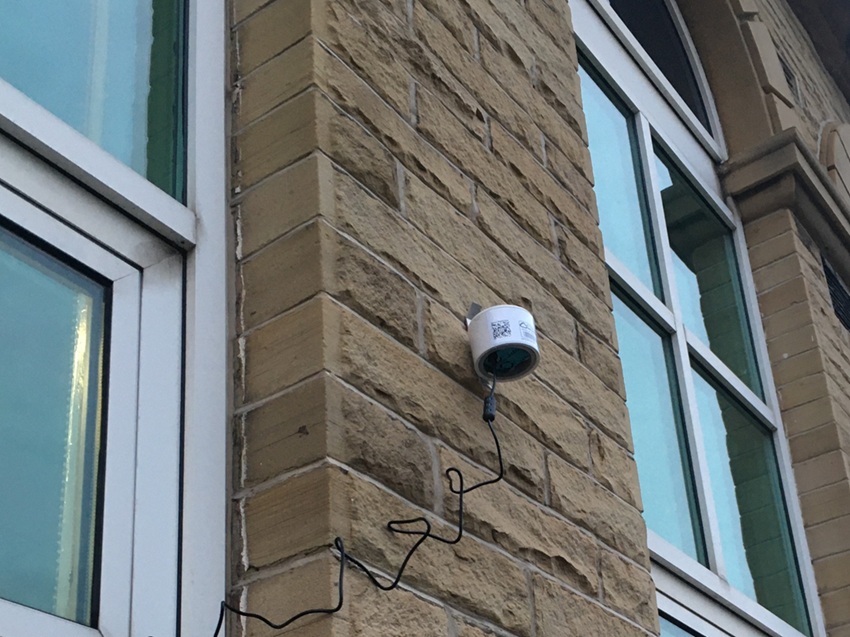Case Study: Analysing PurpleAir sensor data

Aims and objectives
The study aimed to:
- Evaluate the usefulness of PurpleAir sensors as a low-cost alternative to standard research-grade sensors used for national air quality monitoring./li>
- Perform an exploratory analysis of the data to identify changes in air quality before and after the implementation of the Clean Air Zone (CAZ).
- Create descriptive metadata to provide clear information to help other analysts understand the data and its potential usefulness for other projects.
Key takeaways
- The study aimed to evaluate PurpleAir sensors and analyse air quality changes before and after CAZ implementation.
- The study involved placing sensors at 12 sites, collecting data, and performing detailed exploratory analysis using R statistical software.
- The analysis provided insights into sensor measurements, pollutant trends, and patterns across different schools and sensor types.
- The study established a foundation for future research questions and policy decisions regarding air quality and health inequalities in Bradford.
- The collaboration between BIHR, the University of Leeds, and HDRC has provided valuable insights into air quality monitoring, highlighting the importance of low-cost sensors and advanced data analysis techniques.
Led by Professor Rosie McEachan (BIHR) and Dr. Jim McQuaid (University of Leeds), with analytical support from Olasehinde Shobande (BIHR), Dr Chantel Davies (HDRC) and Rob Shore (HDRC), the study involved:
- Placing PurpleAir sensors at 12 sites across Bradford, including 11 schools and Bradford Royal Infirmary Accident and Emergency Department.
- Collecting data from April 3, 2020, to April 14, 2024.
- Cleaning and preprocessing the data using R statistical software to ensure quality by handling missing values, correcting errors, and standardizing formats.
- Conducting descriptive statistics to understand central tendencies and dispersion.
- Visualizing PM2.5 levels for each site and aggregating data for sites inside, outside, and at the border of the CAZ.
The exploratory analysis revealed several limitations of PurpleAir sensors:
Accuracy issues: The sensors showed inconsistencies in PM2.5 measurements compared to standard research-grade sensors. This raises concerns about their reliability for precise air quality monitoring.
Potential biases: The sensors were found to have specific measurement biases, which could affect the interpretation of air quality data.
Data quality: Despite extensive cleaning and pre-processing, some data from PurpleAir sensors did not meet the minimum quality standards and had to be excluded from the analysis.
These findings highlight the need for caution when using low-cost sensors for critical air quality monitoring and policy decisions. The insights gained will inform future research and policy decisions regarding air quality monitoring and interventions in Bradford.
Professor Rosie McEachan is keen to publish a peer-reviewed research paper based on the findings of this study. The insights gained will inform future research and policy decisions regarding air quality monitoring and interventions in Bradford.
Professor Rosie McEachan highlighted the value of the work in understanding air quality and its impact on health:
"I’m incredibly grateful for this." - Professor Rosie McEachan
Additional details on PM2.5
PM2.5 refers to fine particulate matter with a diameter of 2.5 micrometers or smaller, which is about 3% the diameter of a human hair. These particles are so small that they can only be seen with a microscope. PM2.5 can come from various sources, including power plants, motor vehicles, residential wood burning, and industrial processes. Due to their small size, PM2.5 particles can travel long distances in the air and penetrate deep into the lungs, potentially entering the bloodstream.
Exposure to PM2.5 is associated with serious health risks, including respiratory and cardiovascular diseases. Long-term exposure can lead to chronic conditions such as asthma, bronchitis, heart attacks, and even premature death. The particles can also cause inflammation and hardening of the arteries, increasing the risk of heart attacks and strokes.